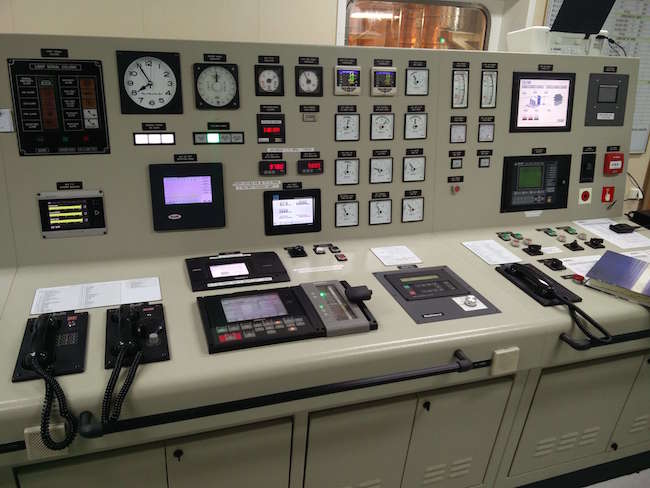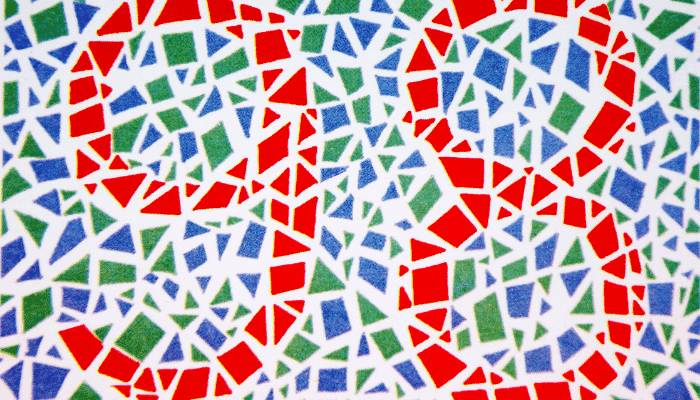What is Ishihara Colour Blindness Test for Sailors?
A voyage on a ship requires seafarers to engage in a range of tasks involving symbols, markers, maps and signals for navigation. It is therefore important that they possess good eyesight.
A maritime career comes with innumerable surprises. It is a growing and ever-expanding industry which endows upon people a diverse array of opportunities. It is therefore a prerequisite for applicants to apply for several tests that will validate their qualifications.
One such prescribed test is the Ichihara colour blindness test which determines an individual’s eyesight function. It is a very reliable test that seafarers have to undertake during the recruitment process.
Accidents at sea because of defects in eyesight are a severe issue and can lead to disastrous consequences. A colourblind person cannot work as a maritime officer since they must be able to discriminate between colours of all kinds.
In a standard engine room, everything has a colour associated with it. Everything is appraised, controlled, and handled based on its colour, from the burner flame, pipeline markings, and lubrication colour to the wiring in panels. It is why colourblind people are unacceptable in the maritime field.

About the Ishihara Colour Blindness Test
The Ishihara Colour Blindness test was developed by a Japanese doctor, Dr Shinobu Ishihara in 1917. He was a professor at the University of Tokyo. The test has since become a prerequisite in the marine world.
The test allows doctors to determine whether or not a person can identify and distinguish between various colours. Colour blindness is a broad term that covers a wide range of issues.
For example, some people are entirely colourblind, meaning they can’t recognise any colour, while others can only recognise a few colours. However, the two types of colour blindness: monochromacy and dichromacy, are the most popular.
Monochromacy is a sort of colour blindness in which people cannot distinguish between colours. In contrast, dichromacy is a type of colour blindness in which only two or three colours becomes indistinguishable.
Some military tasks require the ability to discriminate between hues, particularly those used for signal lights and flares, for operational or safety reasons.
Some Navy and Marine Corps combat operations occupations, as well as Army and Air Force Special Operations and Aviation jobs, require soldiers to be able to differentiate brilliant reds and greens.

Process of the Ishihara Colour Blindness Test
The Ishihara test aims to see if people who want to be sailors can recognise and discern yellow, green, and red colours. Colour blindness is of two types: protanopia and Deuteranopia.
They are relatively uncommon, affecting fewer than 1% of the male population; yet, because seafarers must have perfect vision, the occurrence of this impairment will force aspiring seamen to give up their dream.
There are 38 plates in all, numbered from 1 to 38.
The numbers, however, stands as difficult to comprehend. They’re dispersed and random and sprayed on a dish covered entirely in coloured dots. A person is termed colour blind if they are unable to detect any colour difference in the coloured plates and numbers.
The dots on the circular plate may have colours- yellow and green. The numbers that lie along the coloured dots can be either red or brown.
Protanopia situation is detectable through the effective colour combination of an eye test. Alternatively, the dots on the circular plate may be colours- red and brown.
The numbers that lie along the coloured dots can be green and yellow colours. This type of Ishihara colour blindness test helps to find out the existence of Deuteranopia in a person.
Around 24 plates are examined to confirm that a person has a form of colour blindness and without bias. The number of plates tested can be used to determine the amount of Ishihara colour blindness.
Many maritime accidents and catastrophes become effectively avoidable with the help of an eye test.
Disclaimer :
The information contained in this website is for general information purposes only. While we endeavour to keep the information up to date and correct, we make no representations or warranties of any kind, express or implied, about the completeness, accuracy, reliability, suitability or availability with respect to the website or the information, products, services, or related graphics contained on the website for any purpose. Any reliance you place on such information is therefore strictly at your own risk.
In no event will we be liable for any loss or damage including without limitation, indirect or consequential loss or damage, or any loss or damage whatsoever arising from loss of data or profits arising out of, or in connection with, the use of this website.
Do you have info to share with us ? Suggest a correction
Disclaimer :
The information contained in this website is for general information purposes only. While we endeavour to keep the information up to date and correct, we make no representations or warranties of any kind, express or implied, about the completeness, accuracy, reliability, suitability or availability with respect to the website or the information, products, services, or related graphics contained on the website for any purpose. Any reliance you place on such information is therefore strictly at your own risk.
In no event will we be liable for any loss or damage including without limitation, indirect or consequential loss or damage, or any loss or damage whatsoever arising from loss of data or profits arising out of, or in connection with, the use of this website.
Latest Maritime Knowledge Articles You Would Like:
Subscribe To Our Newsletters
By subscribing, you agree to our Privacy Policy and may receive occasional deal communications; you can unsubscribe anytime.
















hi all of you currently i’m doing naval architecture course do you think
Hi Ajmal
Why dont you ask your question at Marine Insight Forums.
Registration is free.
https://forums.marineinsight.com/
See you there.
Thanks
My eye vision right eye 6/6 and left eye 6/12 what I do merchant navy training…….
My eye vision -right eye 6/60 and left eye 6/6 .And i am btech mech. holder .Can i join merchant navy
i have colour vision problem, can i work as a cook in merchant navy?
Sir
My eye 6/6. 6/9 can I selected for merchant nevy
I HAVE 6/6 AND 6/36 SIGHT CAN I ELIGIBLE FOR MARINE ENGINEER
I have red green color blind so by using color filters can i join merchant Navy
Thanks